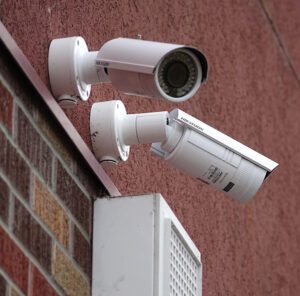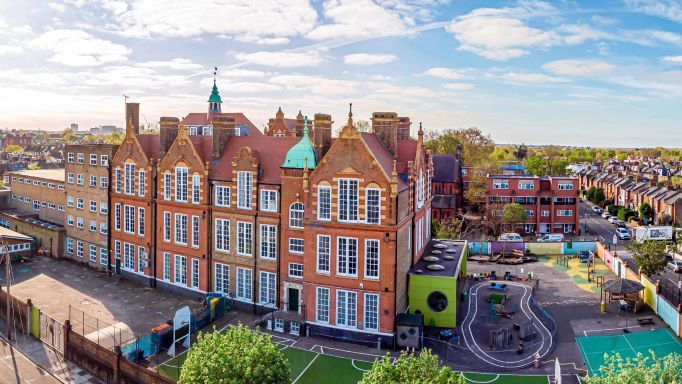While the UK has not faced the kinds of security challenges that US schools have (listen to the podcast further down the page to hear more about that), securing the school environment remains crucial to protecting students and staff.
A multitude of challenges face those charged with securing schools, particularly with school budgets typically overstretched, so how ambitious can those tasked with securing facilities, staff and students be about implementing security measures? IFSEC Global’s Editor, James Moore, reports.
The security challenges facing schools
The immediate requirement of a secure school environment is to protect and ensure the safety of the students and staff. Different methods of doing this are inevitable – ages range from four through to 18, after all – but the demands between balancing security measures while maintaining a pleasant learning environment are under constant scrutiny.
“Most educational buildings are now both public and private spaces. The need to delineate these areas is a security priority in an era when the ‘every child matters’ framework puts child protection and safety at the centre of concern.”
Perimeter protection and access gates or entrances are crucial as effective methods to keep students in during the school day, and intruders out. However, there is also a requirement for access control systems within the grounds itself, so that students can’t access areas that may present a danger or that are specifically reserved for staff. As Claire Blakemore, Managing Director at security manufacturer Mul-T-Lock explained, the challenge of managing people flow across a whole estate can be a constant source of frustration for security managers, where access control and hardware solutions are needed to protect entry points and ensure a secure physical frontline defence.
Video surveillance and intruder alarms are also required to monitor the perimeter and alert of intruders looking to gain access to valuable assets held within the school environment – laptops, computers and sports equipment, just to name a few.
It’s not just the ‘day-to-day’ environment that security and estates managers are tasked with overseeing, though. School facilities are increasingly being used after hours by external stakeholders such as local communities and sports teams. The school environment doesn’t just “stop at three”, explained Chris Paice, Estates Manager, Marlborough Science Academy. Libraries, sporting facilities, IT suites and performance spaces are all in demand until late in the evening, leaving security heads facing additional headaches.
As Jamie Allam, CEO of Amthal Fire and Security, adds: “This means most educational buildings are now both public and private spaces. The need to delineate these areas is a security priority in an era when the ‘every child matters’ framework puts child protection and safety at the centre of concern.”

Video surveillance cameras help keep a school safe (Image: Alamy Stock)
There is consequently a greater requirement for controlling access to individual areas so that only authorised personnel can enter when required, alongside a greater necessity for technology in security systems to play a role in protecting users. Many school estates have legacy technology still in use, so there is demand to unify and integrate much of what they have to move away from a siloed approach, noted Marc Roth, Commercial Manager at systems integrator Custom Intelligent Security.
Extending coverage
With relatively modern CCTV and video surveillance solutions now available at much lower cost than 10-15 years ago, there is greater scope and flexibility to simply extend coverage, at least as a starting point. Marlborough Science Academy, for instance, now has 70 cameras across its estate, compared to just four nine years ago.
As Paice, the Academy’s Estates Manager explains, the additional cameras are vital for ensuring all areas of the school and perimeter that are necessary to monitor are covered, as well as enabling the school to be better protected during non-working hours and days.
Not stopping there however, his team is eventually looking to implement more advanced analytics functions within the cameras themselves – a requirement that Amthal has also witnessed in its own security installation and integration projects, says Allam.
A key reason for adopting analytics is to enable better tracking of students. Those that may be vulnerable, or those that have gone missing or are regularly attempting to skip school, can be spotted much more easily with basic tracking software.
Custom Security’s Roth, who recently supported a project alongside Genetec to upgrade Haberdashers’ Borough Academy in London, highlighted that PTZs embedded with radar systems are even being used in some instances to monitor the perimeter and spot those jumping over, or throwing objects over, the fence.
Listen to episode 7 of the Security in Focus podcast, where we discuss the challenges schools in the United States face when it comes to school shootings and violence management…


 Privacy issues must also be considered. There are inevitably areas that are much more difficult to cover by cameras, such as changing rooms and toilets, while data protection of video footage remains crucial, meaning images may be required to be blurred or masked.
Privacy issues must also be considered. There are inevitably areas that are much more difficult to cover by cameras, such as changing rooms and toilets, while data protection of video footage remains crucial, meaning images may be required to be blurred or masked.